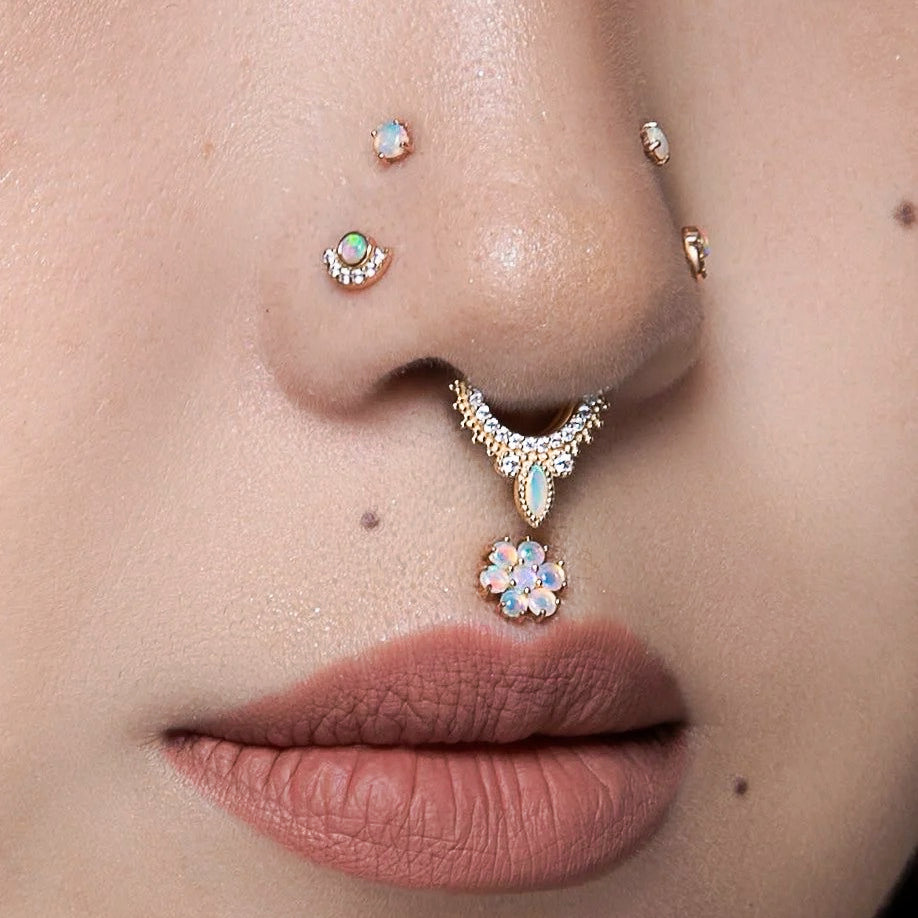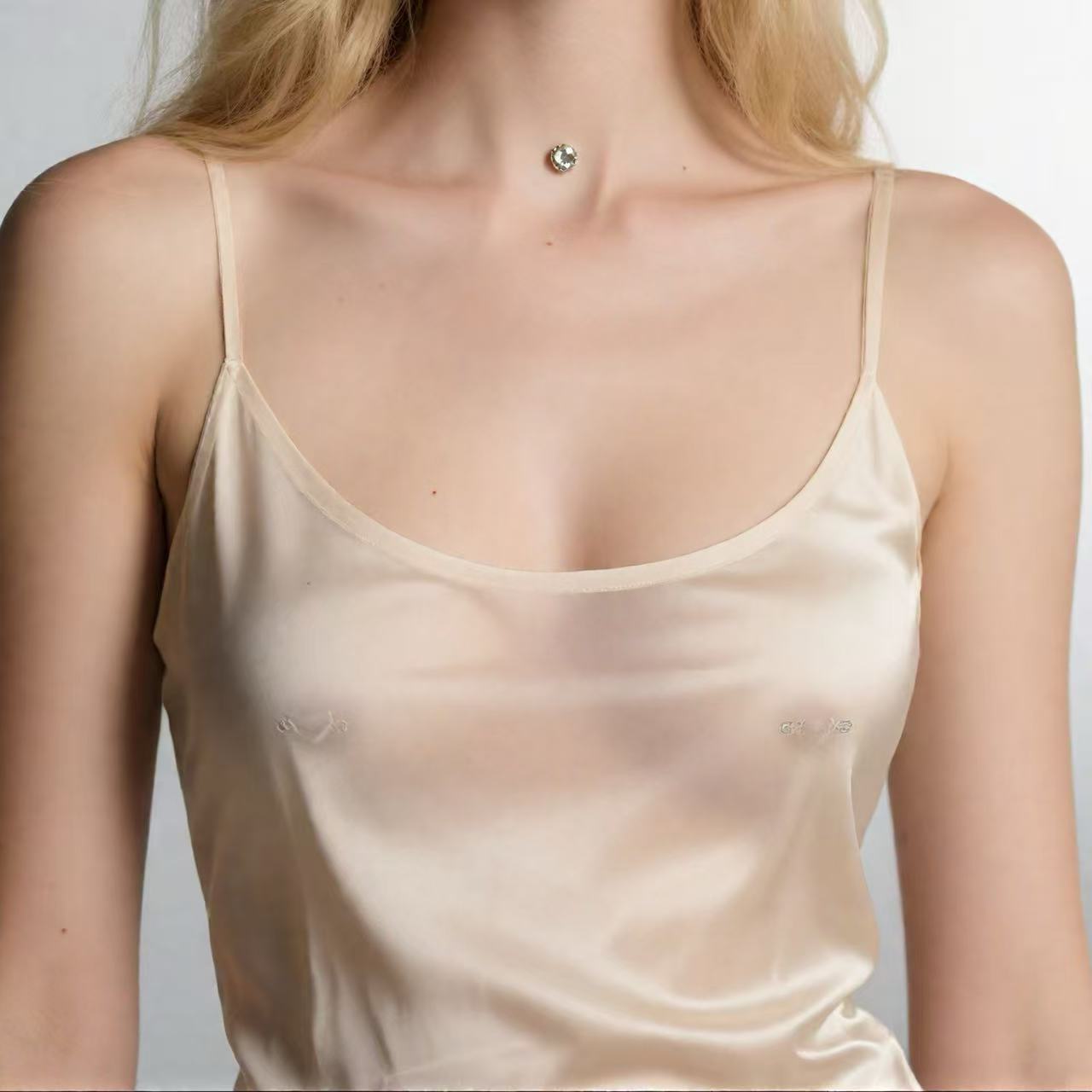
The Body Jewelry Material Guide: Care for Longevity
Body jewelry is more than just an accessory—it's a form of self-expression. But whether you're new to piercings or a seasoned enthusiast, knowing how to properly care for your jewelry is essential for maintaining its beauty and ensuring it stays in great condition. Different materials require different care methods. In this guide, we break down everything you need to know to keep your body jewelry looking as good as new.
General Care Tips for All Body Jewelry
No matter what your jewelry is made of, these universal tips will help extend its lifespan and keep it sparkling:
-
Remove Before Water Exposure
Take off your jewelry before swimming, showering, or washing your face. Chlorine, saltwater, and soap can cause damage or discoloration over time. -
Avoid Sleeping with Jewelry
Sleeping with your jewelry in can lead to physical damage, loss, or even injury depending on the piercing location. -
Keep Away from Extreme Temperatures
High heat and freezing temperatures can affect the integrity, color, and finish of many materials. -
Clean Gently and Regularly
Use lukewarm water and a mild, fragrance-free soap to clean your jewelry. Avoid harsh chemicals or abrasive cleaners. -
Polish with a Soft Cloth
A microfiber or lint-free cloth is ideal for wiping and polishing jewelry after cleaning. -
Proper Storage Is Key
Store each piece separately in a soft pouch or a compartmentalized jewelry box to avoid scratches, tangles, and exposure to air and moisture.
Material-Specific Jewelry Care Guide
1. Titanium

-
Properties: Lightweight, hypoallergenic, extremely durable, and corrosion-resistant.
-
Care Tips:
Although highly resistant to wear, colored titanium can fade over time due to body chemistry and friction. If fading occurs, seek a professional piercer who can re-anodize your jewelry to restore its color. Avoid exposing it to harsh chemicals.
2. Gold

-
Properties: Classic, luxurious, and durable—but can react with acids and chemicals.
-
Care Tips:
Use a gold-polishing cloth regularly to remove tarnish and body oils. Avoid contact with chlorine (e.g., pools and hot tubs), as it can make gold brittle. For long-term wear, opt for 14k or 18k gold for better durability.
3. Gold-Plated Jewelry

-
Properties: Base metal (often stainless steel or brass) coated with a thin layer of gold.
-
Care Tips:
The gold layer can chip or wear off when exposed to moisture, sweat, or chemicals. Remove before showering, swimming, or exercising. Not recommended for daily wear in new piercings.
4. 316L Stainless Steel

-
Properties: Highly corrosion-resistant, durable, affordable, and hypoallergenic for most people.
-
Care Tips:
While resistant to tarnish, it can still show wear over time. Clean with mild soap and water, and dry thoroughly. Avoid prolonged exposure to saltwater and chlorine. A good choice for new piercings due to its safety and affordability.
5. S925 Sterling Silver

-
Properties: Soft, lustrous, and prone to tarnishing when exposed to air and moisture.
-
Care Tips:
Store in an airtight bag or anti-tarnish pouch to prevent oxidation. Clean with a specialized silver polishing cloth. Remove before swimming, showering, or exercising, as sweat and chemicals accelerate tarnishing. Not ideal for long-term wear in piercings due to its softness and reactivity.
6. Copper

-
Properties: Warm metallic glow, antibacterial, but prone to oxidation and verdi gris (green discoloration).
-
Care Tips:
Copper reacts quickly with skin acids, moisture, and air. Clean regularly with a copper polish or lemon juice and salt solution. Note that copper can stain skin temporarily. Not recommended for sensitive skin or fresh piercings. Seal with a jewelry protector spray for longer wear.
7. Acrylic

-
Properties: Lightweight, affordable, and available in vibrant colors—but not autoclave-safe.
-
Care Tips:
Clean only with mild soap and water. Avoid alcohol, perfumes, and extreme temperatures, as these can cause cracking or warping. Do not use tools to adjust acrylic jewelry. If wearing a captive bead ring, warm it slightly with your hands before attempting to remove the bead.
8. Silicone

-
Properties: Soft, flexible, and ideal for comfort—especially in larger-gauge jewelry.
-
Care Tips:
Silicone can attract dust and lint. Clean with water and mild soap, and dry thoroughly. Avoid tight fits, as moisture and secretions can get trapped and cause irritation. Not suitable for all piercings due to its porous nature.
9. Glass

-
Properties: Non-porous, hypoallergenic, and can be sterilized in an autoclave.
-
Care Tips:
While resistant to most chemicals, glass can break under impact. Avoid wearing glass jewelry in oral, genital, or nipple piercings. Remove during sports or sleep. Store separately to prevent scratches.
10. Wood

-
Properties: Natural, lightweight, and unique in grain—but sensitive to moisture.
-
Care Tips:
Never soak wooden jewelry. Dry immediately after cleaning. Treat periodically with natural oils (e.g., jojoba) or beeswax to prevent drying and cracking. Not suitable for wet environments like mouth or nostril piercings.
11. Bone & Horn

-
Properties: Organic materials that are lightweight and culturally significant.
-
Care Tips:
Both are porous and can absorb odors and moisture. Apply a light layer of beeswax occasionally to seal the surface. Avoid hot water—especially for horn, which may reshape if heated. Don’t wear in healing piercings.
When to Remove Jewelry
Know when to take off your jewelry to prevent damage:
-
Before applying lotions, perfumes, or hair products
-
During physical activities or sports
-
While using cleaning agents or chemicals
-
If you notice irritation, discoloration, or damage
Conclusion
Your body jewelry is an investment—in your style, your identity, and your confidence. By following these material-specific care guidelines, you can preserve the beauty and structure of your pieces for years to come. When in doubt, consult with your piercer or jewelry supplier for personalized advice. Keep shining!


